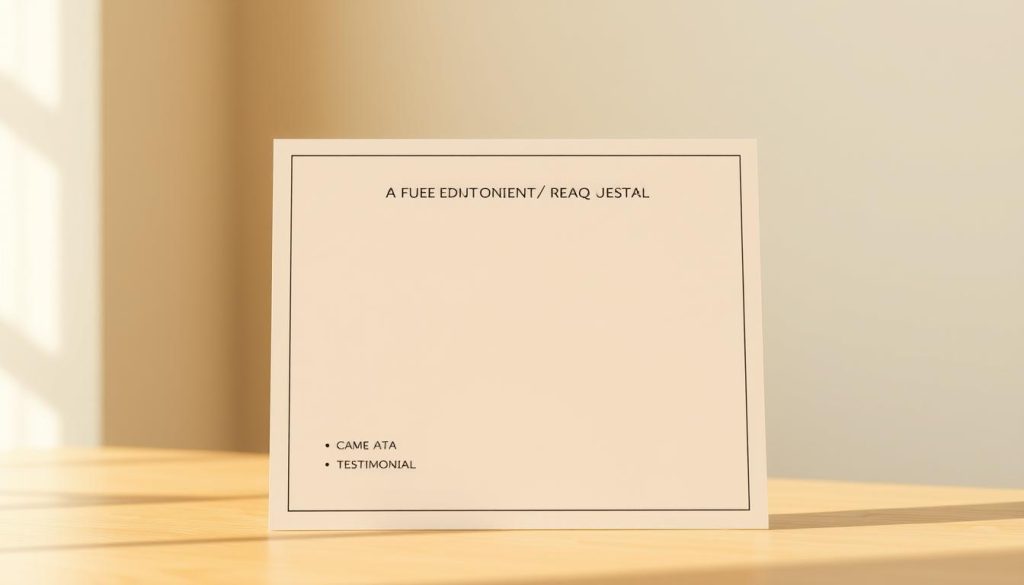As an independent professional, establishing a strong reputation is crucial in a competitive market. One of the most effective ways to achieve this is through testimonials from satisfied clients.
But how exactly do you leverage these client endorsements to grow your business and attract potential clients? The answer lies in understanding the power of social proof and how it can build trust with those considering your services.
By showcasing real experiences from clients, you can demonstrate your expertise and create a foundation for long-term success. In this guide, we’ll explore the process of obtaining, managing, and strategically using testimonials to elevate your freelance career.
Table of Contents
Key Takeaways
- Understand the psychology behind why testimonials work to build trust with potential clients.
- Learn how to collect and leverage client feedback to grow your freelance business.
- Discover the importance of showcasing real client experiences to demonstrate your expertise.
- Find out how to manage and strategically use testimonials to establish a strong reputation.
- Explore the role of social proof in attracting new clients and creating long-term success.
The Power of Client Feedback for Freelancers
In the world of freelancing, client feedback is invaluable for building trust and demonstrating the quality of your work. As a freelancer, you’ve likely worked on numerous projects and satisfied various clients, but the key to turning these successes into more opportunities lies in effectively showcasing them.
Client feedback is more than just a positive review; it’s a powerful tool that can enhance your credibility, improve your services, and drive business growth. By leveraging the experiences of your clients, you can create a compelling narrative about your professional value and the quality of your work.
Building Credibility in a Competitive Market
In a competitive freelance marketplace, potential clients often seek reassurance before hiring. Testimonials from previous clients serve as third-party validation of your capabilities and reliability. They provide objective evidence that your work meets or exceeds expectations, helping to establish trust with potential clients.
| Benefits of Client Feedback | Description | Impact on Business |
|---|---|---|
| Credibility Building | Serves as third-party validation of your work quality | Increased trust among potential clients |
| Business Growth | Drives increased inquiries and conversion rates | More business opportunities |
| Marketing Enhancement | Creates a compelling narrative about your services | More effective marketing materials |
How Testimonials Drive Business Growth
Positive client experiences, when properly documented and shared, can directly contribute to business growth. The psychological impact of social proof is significant, as testimonials create trust signals that help overcome the natural hesitation clients feel when considering a new freelancer. By highlighting both your technical skills and professional value, effective testimonials showcase not just what you delivered but the impact it had on the client’s business.
Strategic use of client feedback in your marketing materials can resonate more authentically than self-promotion, making it a crucial element in your business strategy.
Why Freelance Testimonials Matter
In the freelance world, testimonials are more than just positive feedback; they’re a cornerstone of professional credibility. As a freelancer, your ability to deliver quality work and provide value to your clients is paramount, and client testimonials serve as tangible proof of your capabilities.
Establishing Trust with Potential Clients
Testimonials establish essential trust with potential clients by providing authentic verification of your capabilities from those who have already experienced your services. This social proof is crucial in a competitive market where potential clients are bombarded with choices.
Showcasing Quality and Value
A testimonial not only highlights the quality of your work but also the value you bring to your clients. For instance, a table showcasing the impact of testimonials on client acquisition could look like this:
| Aspect | Without Testimonials | With Testimonials |
|---|---|---|
| Client Trust | Low | High |
| Perceived Quality | Variable | Consistently High |
| Client Acquisition Rate | Slow | Accelerated |
Boosting Your Professional Confidence
Positive testimonials also play a significant role in boosting your confidence as a freelancer. By knowing that your work is appreciated and valued, you’re more likely to take on new challenges and deliver high-quality work on future projects. As noted by successful freelancers, « Positive feedback from clients is a powerful motivator, helping to overcome imposter syndrome and drive professional growth. » This sentiment is echoed across the freelance community, highlighting the multifaceted benefits of testimonials.
For more insights on leveraging testimonials and other strategies to enhance your freelance career, visit our guide on defining your service prices and identifying your targets as a.
Elements of Effective Freelance Testimonials
The elements that make up a compelling testimonial can significantly impact a freelancer’s credibility. Effective testimonials are more than just praise; they provide specific details that highlight a freelancer’s skills and accomplishments.
Specificity: Highlighting Particular Projects
A good testimonial is specific, mentioning the particular project or service provided. This level of detail gives potential clients a clear idea of what you can do and how you can help their business. For instance, a testimonial that highlights a specific challenge you overcame or a methodology you used is far more impactful than generic praise.
Conciseness: Keeping It Brief Yet Informative
Being concise is key. Testimonials should be short and to the point, highlighting the most important aspects of your work. Clients often don’t have time to read long reviews, so it’s best to keep it brief yet informative. A concise testimonial maintains the reader’s interest and effectively communicates your value.
Authenticity: Ensuring Natural Client Voice
Authenticity is crucial. The testimonial should sound natural and reflect the client’s experience with your service. Clients can often tell if a review feels fake or forced. Authentic testimonials help build trust and show that you deliver real value. It’s about preserving the natural voice and perspective of your clients, avoiding overly polished language that sounds manufactured.
To further enhance the effectiveness of testimonials, consider the following key aspects:
- Include specific details about particular projects, such as challenges overcome and measurable results achieved.
- Maintain conciseness to keep the reader engaged and focused on your key strengths.
- Ensure authenticity by preserving the natural voice of your clients.
Perfect Timing: When to Request Testimonials

Understanding when to ask for testimonials is key to getting great feedback. The timing of your request can significantly impact the quality and sincerity of the testimonial you receive from your clients.
Post-Project Completion Window
Requesting a testimonial after project completion is often considered optimal. At this stage, the details of the project are fresh in the client’s mind, and they are likely to be excited about the results. This prompt request ensures that you receive detailed and accurate feedback, especially for projects billed hourly.
After Achieving Significant Milestones
Another strategic time to request a testimonial is after achieving significant milestones within a project. This allows you to capture specific feedback about particular accomplishments, providing focused and relevant testimonials that highlight your skills and expertise.
During Follow-Up Communications
Follow-up communications a few weeks after project completion can also be an effective time to request testimonials. This follow-up allows clients to see the long-term benefits of your work and serves as a reminder to provide a testimonial, maintaining a professional relationship without seeming opportunistic.
Timing your requests appropriately and understanding the psychological readiness of your clients to provide feedback can significantly enhance the effectiveness of your testimonial request process. Integrating testimonial requests into your project workflow ensures a consistent collection of client feedback, adapting your approach based on project duration, complexity, and client relationship.
Methods for Requesting Client Feedback
There are several strategies that freelancers can employ to solicit testimonials from their clients. The key is to choose the method that best suits your client relationship and communication style.
Email Requests
Email is a straightforward way to ask for a testimonial. It allows for personalization and gives clients time to respond thoughtfully. Be sure to include all necessary details and a thank-you note.
Freelance Platform Tools
Many freelance platforms, such as Useme, have built-in tools to request testimonials. These tools streamline the process, making it easy for clients to leave feedback.
Social Media Approaches
Social media channels offer a quick and informal way to ask for testimonials. This method is particularly useful if you frequently interact with clients on these platforms.
In-Person Conversations
If you can meet your client in person, take a moment to ask for a testimonial. This personal approach shows that you value their opinion and can yield more detailed and authentic client feedback.
Each request method should be tailored to your client relationship style and communication preferences to maximize response rates. Successful freelancers often develop a multi-channel approach, using different methods based on client type, project scope, and relationship dynamics.
Best Practices for Gathering Powerful Testimonials
Effective testimonial collection is key to showcasing a freelancer’s quality and value. To achieve this, freelancers must adopt a strategic approach that makes the process easy and efficient for their clients.
Making the Process Easy for Clients
Making the testimonial process easy for clients is crucial. By providing clear instructions and simple submission methods, freelancers can significantly increase response rates. This approach shows respect for the client’s time and preferences, fostering a positive experience.
Writing Draft Testimonials for Client Approval
Writing draft testimonials for client approval is an effective practice. It removes the blank-page barrier while allowing clients to personalize and authenticate the feedback. This step ensures that the testimonials are both meaningful and detailed.
Setting Clear Deadlines for Responses
Setting clear deadlines for testimonial responses creates a sense of urgency without pressuring clients. Typically, requesting feedback within 5-7 days of project completion yields timely and relevant testimonials. This approach helps ensure that the request is not forgotten and that freelancers receive timely feedback.
By implementing these best practices, freelancers can gather powerful testimonials that enhance their credibility and attract new clients. The key is to balance persistence with respect for client time and preferences, creating a positive experience that reinforces good relationships.
Testimonial Request Templates That Work

The art of requesting testimonials lies in striking the right balance between professionalism and personalization. Effective testimonial requests are those that are timely, clear, and considerate of the client’s time and experience. By using well-crafted templates, freelancers can simplify the process of gathering testimonials, making it easier for both themselves and their clients.
To help you gather testimonials, we’ve prepared helpful email templates that you can use to ask your clients for reviews. These examples will make the process easier for both you and your clients.
Post-Project Completion Email Template
Requesting a testimonial after project completion is a strategic move. At this stage, client satisfaction is typically at its highest, and the details of the project are still fresh in their mind. Here’s an example template:
Subject: Request for a Testimonial
Hi [Client’s Name],
I hope you’re doing well. I’d like to ask if you could provide a short testimonial about the [project] we recently completed. Your feedback would be incredibly valuable to me as I continue to grow my freelance business.
This template is straightforward and shows appreciation for the client’s feedback, making it more likely that they will respond positively.
End of Collaboration Request Template
When a collaboration comes to an end, it’s an appropriate time to request a testimonial. Here’s a template you can use:
Subject: Your Feedback Would Be a Great Help
Hi [Client’s Name],
I wanted to thank you for the opportunity to work together. It was a pleasure collaborating with you on [project/ongoing work]. As our project has come to a close, I would greatly appreciate it if you could share your thoughts on our collaboration as a testimonial.
These templates include strategic elements like specific guidance on testimonial content and easy response mechanisms. By adapting them to match your communication style and client relationship, you can increase response rates and gather valuable testimonials.
Strategic Places to Display Your Testimonials
Effective testimonial display is a powerful tool for freelancers aiming to establish trust with potential clients. By showcasing testimonials in strategic locations, you can significantly enhance your credibility and attract new business opportunities.
Portfolio Website Integration
Creating a dedicated testimonial page on your website can be a powerful way to showcase your reviews. This page acts as a trust signal, encouraging new clients to hire you based on your proven track record. Strategic placement of testimonials throughout your portfolio website creates multiple trust touchpoints that reinforce client confidence.
LinkedIn and Social Media Profiles
Integrating testimonials into your LinkedIn and social media profiles can maximize visibility and impact. You can leverage platform-specific features to highlight your strengths and the value you bring to clients. For more insights on finding clients online, you can refer to resources like this article on online client acquisition strategies.
Proposal and Pitch Documents
Including relevant testimonials in your proposal and pitch documents can address potential client concerns and highlight your specific strengths. This strategic placement can significantly enhance the persuasive power of your proposals.
By displaying testimonials in these strategic places, you can create a consistent and reassuring message that showcases your expertise and builds trust with potential clients.
Managing and Responding to All Types of Feedback
Effectively managing feedback is crucial for freelancers to maintain a positive reputation and attract new clients. Not all feedback will be positive, but negative reviews can be helpful in improving services and demonstrating a commitment to quality.
When handling negative reviews, it’s essential to respond professionally and address any concerns promptly. This approach can turn a negative experience into a positive one, showcasing a freelancer’s dedication to client satisfaction.
Professional Handling of Negative Reviews
Professional management of all feedback types demonstrates maturity and commitment to client satisfaction. When responding to negative reviews, focus on understanding client concerns, acknowledging valid points, and outlining concrete steps for resolution.
- Respond thoughtfully and non-defensively to negative feedback.
- Acknowledge valid client concerns and show empathy.
- Outline specific steps to resolve issues and improve services.
Turning Criticism into Improvement
Constructive criticism represents valuable opportunities for service improvement. By approaching it with openness and a genuine desire to enhance client experience, freelancers can refine their work processes.
| Feedback Type | Response Strategy | Outcome |
|---|---|---|
| Negative Review | Professional Response | Improved Client Trust |
| Constructive Criticism | Openness to Improvement | Enhanced Service Quality |
By developing systematic processes for incorporating feedback into their work methods, freelancers can create continuous improvement cycles that ultimately lead to more positive testimonials and a stronger professional reputation.
Different Types of Testimonial Formats
Client testimonials come in multiple formats, each offering distinct advantages for freelancers looking to establish trust with potential clients. The most effective testimonial strategies incorporate multiple formats to appeal to different client preferences and consumption habits.
Choosing the Right Format depends on your service type, client base, and marketing goals. You might want to choose one format over the others or have a mix depending on your objectives.
Written Testimonials
Written testimonials remain the most common format due to their ease of collection and versatility in placement across various marketing materials and platforms. They can be used on your website, in proposals, or as part of your marketing materials.
Video Testimonials
Video testimonials create powerful emotional connections through visual and auditory elements that convey authenticity and enthusiasm beyond what text can achieve. They give extra legitimacy because you can see a real customer and hear about their experience.

Case Studies and Success Stories
Case studies and success stories represent expanded testimonial formats that combine client feedback with detailed project information to demonstrate your problem-solving process. They provide a comprehensive view of your service and its impact.
Platform-Specific Reviews
Platform-specific reviews on sites like LinkedIn, Upwork, or industry-specific marketplaces carry unique credibility due to their third-party verification systems. Getting reviews on LinkedIn provides public proof of your abilities and endorses your skills.
Leveraging Testimonials to Elevate Your Freelance Career
Elevating your freelance career requires strategic use of testimonials to build credibility and attract new clients. By following the steps outlined in this guide, you can effectively request and receive great reviews from your satisfied customers.
To maximize the impact, it’s crucial to ask for testimonials at the right time, ensuring they are specific, concise, and authentic. Simplifying the process for your clients will yield better results. Regularly updating your profile with new testimonials demonstrates your commitment to quality work and client satisfaction, helping you stand out on various platforms.
Testimonials function as powerful marketing assets, creating ongoing value from past client relationships. They help refine your service offerings and pricing strategies based on what clients value most. By leveraging testimonials strategically, you can address specific concerns that might prevent potential clients from taking the next step.
Starting your testimonial collection process today can transform your freelance business over time through enhanced reputation and increased referrals. By building a systematic approach to testimonial collection, management, and deployment, you create a sustainable competitive advantage that compounds over time.
FAQ
How do I request a testimonial from a client?
To request a testimonial, reach out to your client via email or through a freelance platform’s messaging system after completing a project. Be sure to make the process easy for them by providing a clear and concise request.
What makes a testimonial effective?
An effective testimonial is specific, concise, and authentic. It highlights particular projects or services you’ve provided and showcases the quality and value you brought to the client’s business.
When is the best time to ask for a testimonial?
The best time to ask for a testimonial is after completing a project, achieving significant milestones, or during follow-up communications when the client’s experience is still fresh.
Can I use different formats for testimonials?
Yes, you can use various formats such as written testimonials, video testimonials, case studies, and platform-specific reviews to showcase your work and the value you provide to clients.
How do I handle negative feedback or reviews?
Handling negative feedback professionally is crucial. Respond promptly, acknowledge the client’s concerns, and outline steps you’re taking to address the issues. This demonstrates your commitment to client satisfaction and continuous improvement.
Where should I display my testimonials?
Display your testimonials on your portfolio website, LinkedIn profile, and other social media platforms. You can also include them in proposal and pitch documents to build credibility with potential clients.
How can testimonials help my business growth?
Testimonials help establish trust with potential clients, showcase your quality and value, and boost your professional confidence. They can drive business growth by demonstrating your expertise and the results you can deliver.





